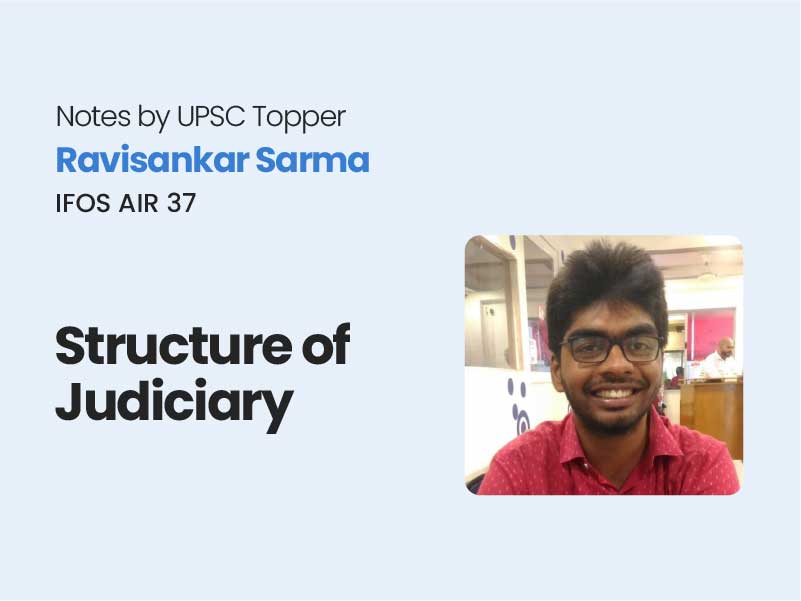Companion@360 → 7 Month programme to sharpen your writing skills → REGISTER NOW

Structure, Organization and Functioning of Judiciary
Promotion of Judges
On October 12, the SC opined that advocating cases pro-bono shall be a parameter for evaluation in cases of promotion to senior advocate level. Integrity, conduct, reputation and number of reported judgements in which advocates have appeared would be factored in by a committee which would recommend any advocate for post of senior advocate
The Union Government has given its consent to the same and opined that any advocate should have fought a certain minimum number of cases pro bono to be qualified for elevation to post of senior advocate.
Judges to high courts are appointed by a collegium made up of top 5 judges of the apex court and Law ministry only has to give its concurrence
Appointments of Judges in SC and HC
Current Procedure
There exists a collegium system of judges including the Chief Justice of India and 4 senior most judges of the SC which recommend appointments and transfer of judges. The Collegium is system is not prescribed anywhere in the constitution and is a judicial invention.
The HC Chief Justice is appointed by the president on the recommendation of the Chief Justice of India and the Governor of the State. The other judges of a high court were initially appointed by the president on recommendation of Chief Justice of high court and Governor; later CJI’s recommendation powers were also included and made binding.
National Judicial Appointments Commission (NJAC)
The 99th constitutional amendment act was implemented to set up an NJA commission, a constitutional body, consisting of the Chief Justice of India, two senior-most judges of the SC, the law minister and two eminent persons to replace the existing collegium system.
The 2 eminent personalities would be selected for a 3-year term by a committee consisting of CJI, Prime Minister and Leader of Opposition in the Lok Sabha. They are not eligible for re-nomination.
Why NJAC over Collegium?
Better Balance of Power: NJAC was envisioned to provide civil society and politicians a voice in the appointment of judges. The collegium system being a part of judiciary itself was not visibly accountable in the appointment process with the judiciary itself being its own sole determinant. It was argued that the collegium created an empire within the empire and lacked much needed transparency that was necessary to garner requisite public faith and confidence.
The NJAC was hence envisioned to provide a better balance of power between the executive and judiciary by increasing non-judicial representation in appointment commission
Read Notes by Ravisankar Sarma
Features of NJAC
The CJI and the 2 SC judges can veto any name proposed to them for appointments to a judicial post and once rejected the proposal cannot be revived. However, the judges need the support of other members of the NJAC to push their own proposal through
NJAC was struck down by the SC on the ground of being unconstitutional
Why NJAC was struck down?
Affects Independence of judiciary: The NJAC act was struck down because the SC found it unconstitutional as it compromised on the independence of the judiciary by providing non-judicial members stake in judicial appointments.
The primacy of Judiciary: It was deemed to be a violation of the basic structure of the constitution and hence the court argued that the current procedure could not be removed through a constitutional amendment act as the primacy of judiciary is a part of basic structure of the constitution.
On October 3, SC published a resolution promising to hereafter make public its various decisions regarding the elevation of judges to SC and HC and transfers of judges between High courts. Such a move is thought to bring much-needed transparency to what was largely an opaque system owned and run by the judiciary itself.

